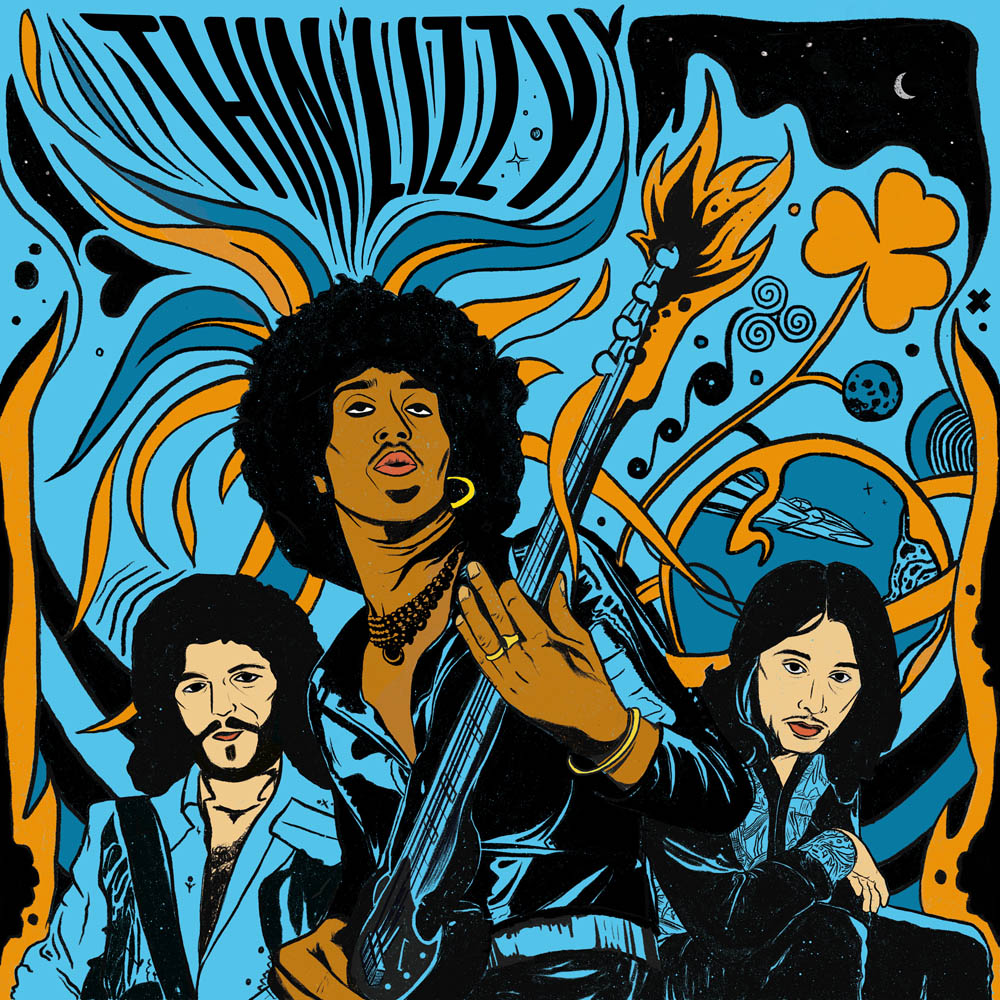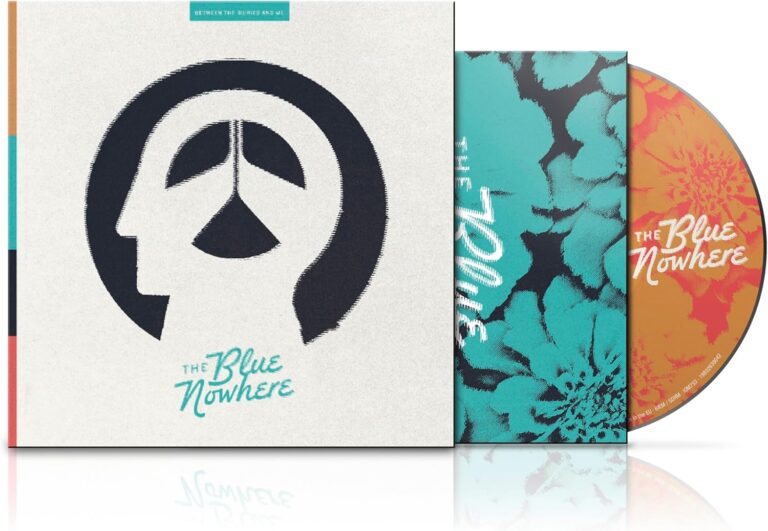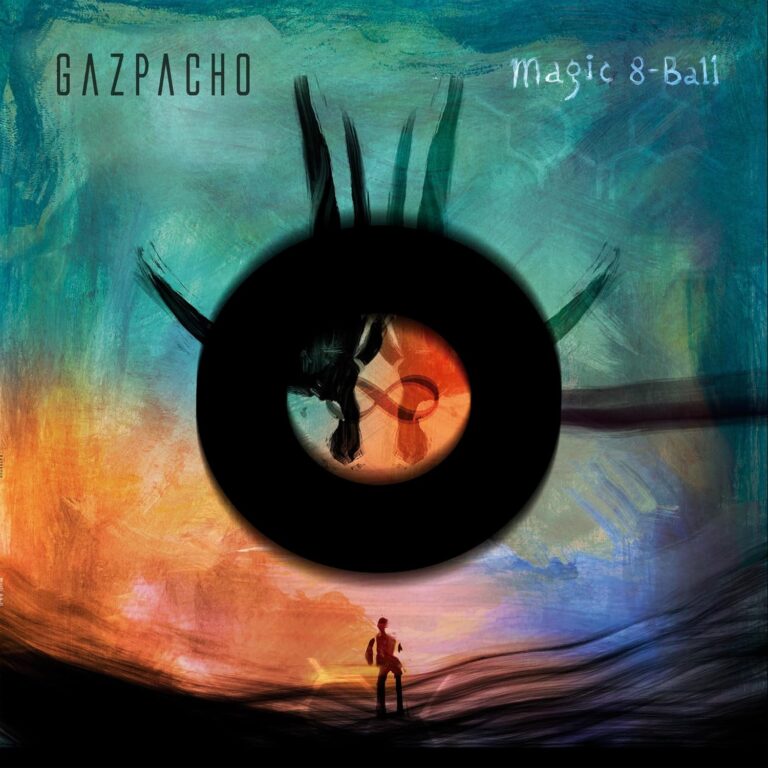
Introduction
It has been 42 years since Thin Lizzy fans had anything but a reissue to pore over. While not exactly new, The Acoustic Sessions finds founding member Eric Bell and drummer Brian Downey pairing newly recorded acoustic tracks with never-before-heard vocals from Phil Lynott, who tragically passed away in 1986. With the vocal takes recorded during the original album sessions, this is a chance to hear Phil working his way through the songs before the final versions were laid down, and the result is an album offering intimate, stripped-down takes of nine Thin Lizzy classics, including a take on the well-worn favourite, Whiskey In The Jar.

Formats
Fans of the band have a solid array of versions from which to choose. The basic CD edition is available in both colour and B&W artwork variants, as is the vinyl, with a choice of clear vinyl in the colour sleeve and marble vinyl in the B&W variant. There’s also a blu ray edition (colour sleeve only), which boasts Atmos, 5.1 and high-res files, as well as a bonus track – Slow Blues (Gary Moore).
This review covers the clear vinyl version in the colour sleeve. It is, quite simply, a thing of beauty. Housed in a simple sleeve with liner notes on the printed inner, the glorious comic book artwork is brought to life thanks to deft use of spot varnish, making it really stand out on the shelf. There’s also a removable hype sticker on the front reminding us that this is Thin Lizzy’s first recorded work since 1983. Pressed on clear vinyl, it’s an incredible edition, rock solid and with minimal surface noise, and it really brings these tracks to life.
The Album
Side 1:
The album opens with Eric Bell’s scratchy guitar as he peels out the well-worn riff to Mama Nature Said. It’s but a few moments before Phil’s voice cuts across the mix and it’s amazing how something so expected can, nevertheless, give you goosebumps. Benefitting from the raw emotion so common to demos (before a piece is refined through the multiple takes of a recording session), it feels like he’s in the room with you, and it’s good to see that the instruments appear to have been tracked live, with little studio trickery – ensuring these pieces have a rare intimacy that is every bit as beguiling as hearing the originals for the first time. The only slight disappointment is that they opted for a fade out rather than a definitive conclusion, but this is a minor gripe, and it does little to detract from the track. Next up, A Song For While I’m Away proves to be surprisingly opulent, Eric’s acoustic guitar augmented by the rich tones of an orchestra (arranged by Fiachra Trench), the resulting track caught somewhere between the Beatles and the Rolling Stones. It’s a lovely piece, and Phil’s layered vocals are delivered with a rare sensitivity that packs an emotional punch.
If the first two songs draw the listener in, it is Eire that finds them utterly hooked. Stunningly arranged, with liquid slide drifting across the mix like the heated wax of a lava lamp, it’s a beautifully dusty take on the song and, although you know that vocalist and band are separated by decades, you still can’t quite escape the sensation that the track is unfolding live as it happened. There’s genius in these arrangements, neither overdone, nor understated, and the results are heart breaking.
Adding Phil’s bass and Clodagh Simond’s piano to the mix, Slow Blues – E.B (Eric Bell) evokes a dusty bar, cigarette ash stuck to whiskey-stained tables, and it boasts one hell of a solo, while Phil – his voice cracking with emotion – inhabits the song with an intensity that belies the notion that this is some sort of unplugged endeavour. The first side ends with a haunting version of Dublin, the picked guitar bulked out by endlessly reverberating chords that seem to wash against the welcoming shore that is Phil’s subdued vocal. It’s a stunning close to a first side that is near flawless in execution.
Side 2:
Opening side 2, we get a fairly straight forward rendition of Whiskey In The Jar. Nailed by Brian Downey’s taut drums and given depth courtesy of Phil’s acoustic guitar, it is arguably less interesting than many of the other tracks here, purely because there’s less space to play with the arrangement. As such, it’s a fine version of a classic song (and fans will surely get a kick out of it), but it has none of the subdued majesty found elsewhere. With Phil once again on bass, Here I Go Again has a folky pulse to it that recalls early Dylan, especially in the way the syllables seem to pile up against the end of each bar, and it really suits the stripped-down arrangement opted for by Eric and Brian. Then there’s the lovely Shades Of A Blue Orphanage, an album highlight that finds Clodagh Simonds adding backing vocals, mellotron, harpsichord, and keyboards to the mix. With Clodagh’s subtle embellishments and Phil’s haunting harmonica, it’s a truly beautiful piece of music, once more reminding you of the raw skill at the heart of this band. This short album ends with a burst of energy in the form of Remembering Pt. 2. Played at lightning speed and underpinned by Brian’s surprisingly thunderous percussion, it feels like a closing celebration of Thin Lizzy’s music rendered as one, single, effervescent track, and it provides the album with a suitably tumultuous close.
Conclusion
What a treasure. From the beautifully designed packaging to the incredibly thoughtful sequencing of the songs, this short, sweet album stands as a testament to the many different faces of Thin Lizzy. From the rambunctious to the heartbreaking, at its core, the album celebrates the versatility of Phil Lynott’s voice, and the power of a band that remains much loved and with good reason. Essential for fans, and a damned good introduction to newcomers, this is a respectful and heartfelt tribute to a much-missed artist, and it crackles with life throughout. 9.5/10




